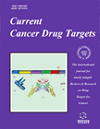
Full text loading...
We use cookies to track usage and preferences.I Understand
Emerging evidence identified sex as a variable regulating immune system functions and modulating response to immunotherapy in cancer patients.
This retrospective study analysed sex-related differences in immunotherapy outcomes in a real-world population of non-small cell lung cancer (NSCLC) patients treated with immune checkpoint inhibitors (ICIs).
We retrospectively investigated clinical data of 99 patients with advanced NSCLC and treated with single-agent nivolumab and pembrolizumab at Medical Oncology Unit, Careggi University Hospital, Florence (Italy), between April 2014 to August 2019. Main clinical characteristics and clinical outcomes were analysed.
Our study showed that the efficacy of ICI treatment differed according to gender. A trend for better median progression-free survival (mPFS) was reported in males (mPFS 5.0 months, 95% Confidence Interval [CI] 4.0-11.0) than females (mPFS 4.5 months, 95% CI 2.0-9.0) (p=0.133), while no significant difference for overall survival (OS) between the two sex groups was observed (p=0.622). In the nivolumab cohort, we showed a statistically significant difference for a longer PFS in men compared to women (log-rank p=0.054), HR for PFS in females versus males was 1.81 (95% CI 0.97-3.37, p=0.062). Disease control rate (DCR) was achieved in 55.7% and 45.7% of men and women, respectively, while disease progression was registered in 44.3% of males and 54.3% of females (p=0.386).
Gender is a variable that should be taken into account in the choice of immunotherapy. Future prospective randomized trials testing tailored sex-based immunotherapy strategies are required to validate our findings before integrating into clinical practice.

Article metrics loading...

Full text loading...
References


Data & Media loading...
Supplements

